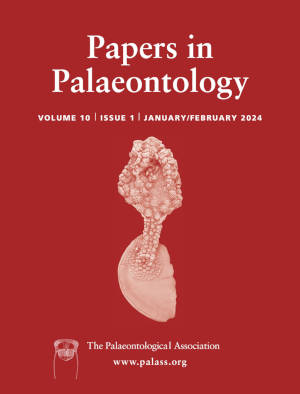Article: The first unique-headed bug (Hemiptera, Enicocephalomorpha) from Cretaceous Iberian amber, and the Gondwanan connections of its palaeoentomological fauna
Publication: Papers in Palaeontology
Volume:
10
Part:
2
Publication Date:
2024
Article number:
e1550
Author(s):
Leonidas-Romanos Davranoglou, Ricardo Pérez-de la Fuente, Petr Baňař, and Enrique Peñalver
DOI:
10.1002/spp2.1550
Abstract
Abstract Enicocephalomorpha, also known as unique-headed bugs, are a seldom-collected infraorder of heteropteran insects whose evolutionary relationships have puzzled entomologists for more than a century. Unique-headed bugs are exceptionally rare in the fossil record, which hinders our understanding of the morphological transformations of the lineage across time and also affects the calibration of molecular clock estimates used to date the origins of the infraorder. Here, we report the discovery of Enicocephalinus ibericus sp. nov. from Iberian amber in the Ariño deposit in Spain, early Albian (Early Cretaceous) in age. The new species represents the second oldest fossil enicocephalomorphan to date, and the second record of this infraorder from European deposits. Remarkably, the closest relative of E. ibericus is the congeneric E. acragrimaldii Azar from Lebanese amber that is c. 20 myr older (Barremian), indicating a long-term persistence of the Enicocephalinus lineage across geological time. A review of the existing literature enabled us to record a total of 20 congeneric insect species that have been found in both Lebanese and Iberian ambers, suggesting the existence of previously underappreciated entomofaunal connections between southern Laurasia (the European archipelago) and northern Gondwana during the Cretaceous. We show that the palaeoentomological record holds remarkable potential for elucidating the faunistic exchanges and palaeobiogeographical patterns in the peri-Tethyan region during the Cretaceous.
